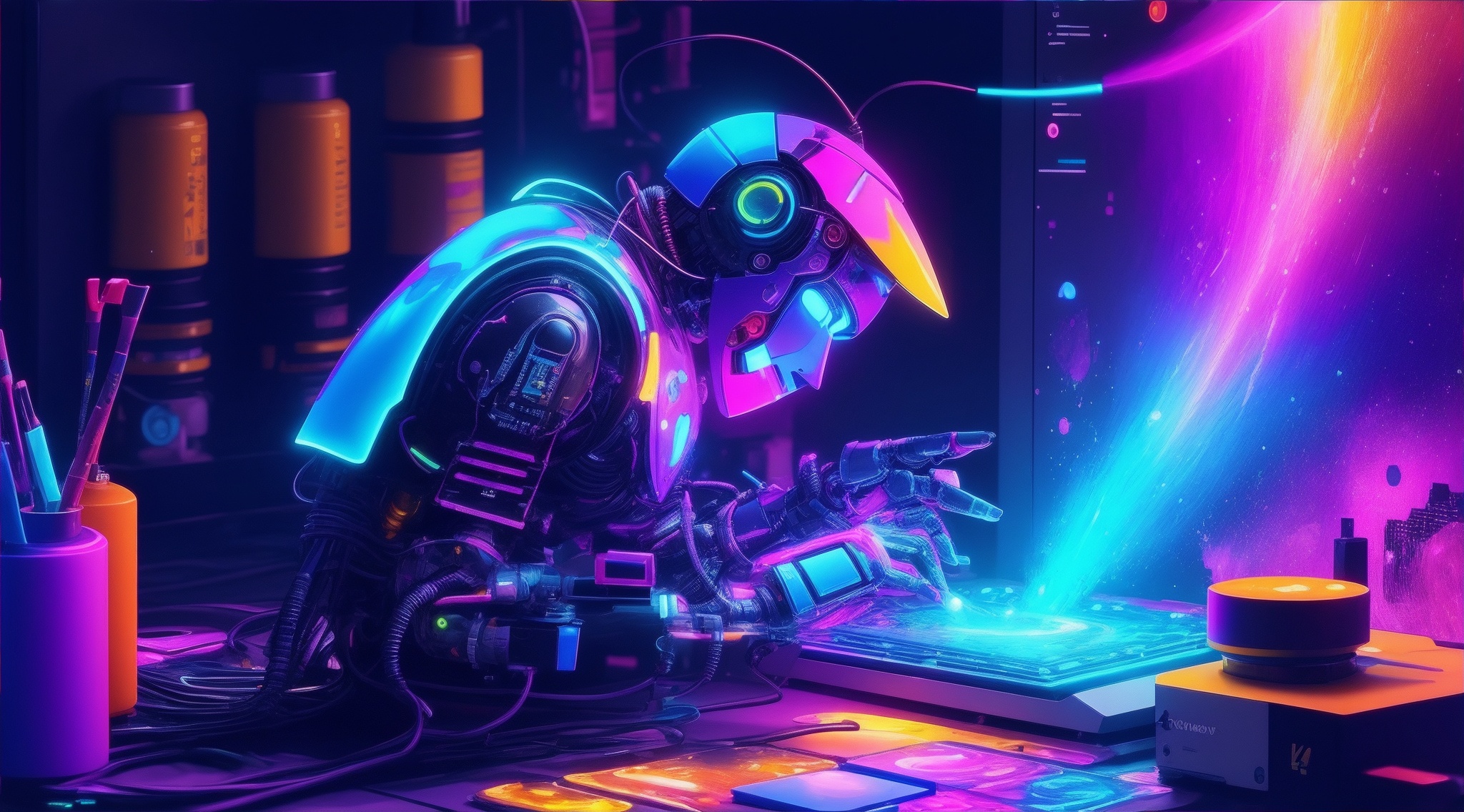Are you eager to enhance your image generation tasks with Xformers but encountering obstacles? The fusion of Xformers with Stable Diffusion holds the promise of overcoming these challenges and revolutionizing your image generation endeavors. By seamlessly integrating these two powerful tools, you can unlock a new realm of possibilities, optimizing both speed and efficiency in your creative process. Dive into the world of Xformers Stable Diffusion and witness how this dynamic duo can reshape the way you approach image generation.
Introduction to the Xformers Library
Image generation plays a pivotal role across various domains, encompassing computer vision, graphics, and artificial intelligence. Enter the Xformers library, a brainchild of Facebook Research, engineered to turbocharge image generation on NVIDIA GPUs. By harnessing the potent capabilities of GPUs, Xformers propels image generation to new heights, preserving impeccable quality in the process.
Optional Acceleration for NVIDIA GPUs
One of the standout features of the Xformers library is its exclusive acceleration tailored for NVIDIA GPUs. This implies that users equipped with compatible GPUs can fully exploit the library’s optimization prowess, unlocking faster and more efficient image generation.
Compatibility and System Prerequisites
To leverage the GPU acceleration offered by Xformers, your system must meet these prerequisites:
- NVIDIA GPU: Xformers acceleration is compatible with NVIDIA GPUs spanning from Pascal to the latest Hopper architecture.
- Operating System: Either Windows or Linux.
- Python Version: Python 3.10 or later.
Manual Installation Obsolete
Historically, users grappled with the laborious task of manually constructing the Xformers library, a process both intricate and time-consuming. However, as of January 23, 2023, a significant overhaul has streamlined this ordeal, obviating the need for manual installation.
The transition from user-built wheels to official wheels has ushered in a seamless installation process. Users on both Windows and Linux platforms can now effortlessly install the Xformers library sans the burdensome manual labor.
Stable Diffusion Automatic1111 Xformers Installation Guide for Windows
For Windows lovers, here’s a stepwise blueprint for installing the Xformers library and enabling GPU acceleration:
- Install Visual Studio Build Tools 2022: Solely the “Desktop development with C++” component is necessary.
- Install CUDA 11.3: Subsequent versions lack official testing, so adhering to CUDA 11.3 is advisable for compatibility.
- Clone the Xformers repository and establish a virtual environment (venv):
git clone https://github.com/facebookresearch/xformers.git
cd xformers
git submodule update --init --recursive
python -m venv venv
./venv/scripts/activate- Install PyTorch separately to avert complications with the CPU version:
pip install torch torchvision --extra-index-url https://download.pytorch.org/whl/cu113- Install the remaining dependencies:
pip install -r requirements.txt
pip install wheel- Configure the NVCC_FLAGS environment variable to facilitate building with MS Build Tools 2022:
For PowerShell:
$env:NVCC_FLAGS = "-allow-unsupported-compiler"For Command Prompt (cmd):
set NVCC_FLAGS=-allow-unsupported-compiler- Construct Xformers utilizing these commands (this process might consume some time):
python setup.py build
python setup.py bdist_wheelBonus Tip for Expedited Building on Multi-Core CPUs
If you possess a multi-core CPU on a Windows system, expedite the build process by incorporating Ninja:
- Download Ninja: Retrieve the ninja-win.zip file from https://github.com/ninja-build/ninja/releases and unzip it.
- Place Ninja: Relocate the ninja.exe file to C:\Windows or append the complete path of the extracted ninja.exe to the system PATH.
- Verify Installation: Execute
ninja -hin the command prompt to confirm a successful installation. - Construct Xformers: Execute the preceding build commands; Ninja will be automatically employed, resulting in substantially elevated CPU utilization (40%+).
Stable Diffusion Automatic1111 Xformers Installation Guide for Linux
For Linux enthusiasts, follow these directives to install Automatic1111 Xformers and activate GPU acceleration:
- Navigate to the WebUI directory and activate the virtual environment:
source ./venv/bin/activate- Navigate to the Xformers repository and clone it:
cd repositories
git clone https://github.com/facebookresearch/xformers.git
cd xformers
git submodule update --init --recursive- Install the requisite dependencies:
pip install -r requirements.txt
pip install -e .Installing Xformers on a Mac (M1)
Before proceeding, please note that Xformers may have limited compatibility on Mac (M1) due to GPU architecture differences. However, you can try the following steps:
1. Update Homebrew for ARM64 Version:
Open your Terminal and run the following command to install or update Homebrew for ARM64 architecture:
/bin/bash -c "$(curl -fsSL https://raw.githubusercontent.com/Homebrew/install/master/install.sh)"2. Install libomp:
Install libomp by running the following command in your Terminal:
arch -arm64 brew install libomp After installation, add the libomp to your PATH by running these commands:
echo 'export PATH="/opt/homebrew/opt/libomp/bin:$PATH"' >> ~/.zshrc
source ~/.zshrc3. Install LLVM:
Install LLVM using Homebrew by running this command:
arch -arm64 brew install llvm Similarly, add LLVM to your PATH with these commands:
echo 'export PATH="/opt/homebrew/opt/llvm/bin:$PATH"' >> ~/.zshrc
source ~/.zshrc4. Install Xformers with pip:
Finally, you can install Xformers using pip:
pip install xformersPlease keep in mind that using Xformers on a Mac (M1) might not provide the same level of GPU acceleration and performance as on other platforms due to hardware differences. Additionally, the compatibility of Xformers with ARM64 architecture may vary, so it’s essential to verify its functionality for your specific use case.
Troubleshooting Xformers Installation Made Effortless!
Encountering hurdles during the Xformers installation? Fret not, solutions await! Technical glitches can be vexing, but we’ve curated straightforward remedies for the most common issues:
1. “Installation of Xformers is not supported in this Python version.
If this problem bothers you, the solution is available on GitHub, where ClashSAN provides a step-by-step tutorial for integrating Xformers with your Python version.
Visit here: xFormers GitHub Page
2. “Stable-diffusion: no module ‘Xformers’.”
The elusive ‘Xformers’ module seems to play hide-and-seek. Fear not; we’ve prepared a guide to swiftly resolve this issue.
See me: Solution
3. “Automatic1111 Xformers not installed.”
Oops, it appears ‘automatic1111’ isn’t synchronized with Xformers. But despair not! We’ve got you covered with a quick fix.
Simply follow this GitHub page to rectify the issue in no time: xFormers GitHub Page
4. “No module ‘Xformers’. Proceeding without it.”
You are not alone; many users have encountered this problem.” The good news is that we’ve got an easy remedy.
Follow the link, and you’ll swiftly resolve this issue: Solution
We trust these swift solutions will salvage your day and make your Xformers installation experience a breeze!
Read This: Dreambooth Guide for Stable Diffusion
Final Thoughts
The Xformers library, when coupled with Stable Diffusion, emerges as a true game-changer in the landscape of image generation on NVIDIA GPUs. By harnessing the prowess of optional GPU acceleration, users can unlock a realm of accelerated and highly efficient image generation, all while intelligently managing VRAM consumption. This synergy between Xformers and Stable Diffusion paves the way for smoother and swifter image generation processes, reducing rendering times and enhancing overall performance.
Furthermore, the recent updates implemented in the Xformers library have streamlined the installation process, making it a hassle-free experience for both Windows and Linux users. This development signifies a significant leap in accessibility, ensuring that a broader community of practitioners, whether in the domains of computer vision, graphics, or any AI-related field, can effortlessly integrate the Xformers library into their workflow.
In conclusion, the fusion of Xformers with Stable Diffusion not only expedites image generation but also optimizes resource utilization. The journey from intricate and time-consuming installations to user-friendly and efficient setups exemplifies the commitment to enhancing the user experience. So, whether you’re delving into the realms of computer vision, graphics, or any AI-related discipline, embracing the Xformers Stable Diffusion partnership unveils the true power of GPU-accelerated image generation, empowering you to achieve remarkable results with ease.
FAQs
-
What is the primary function of the Xformers library?
The Xformers library speeds up picture creation on NVIDIA GPUs, improving performance and lowering VRAM use.
-
Which GPUs are supported by Xformers?
Xformers is compatible with NVIDIA GPUs from Pascal to the latest Hopper architecture.
-
Is manual installation required for Xformers?
No, manual installation is no longer necessary. Recent updates facilitate effortless installation for both Windows and Linux users.








